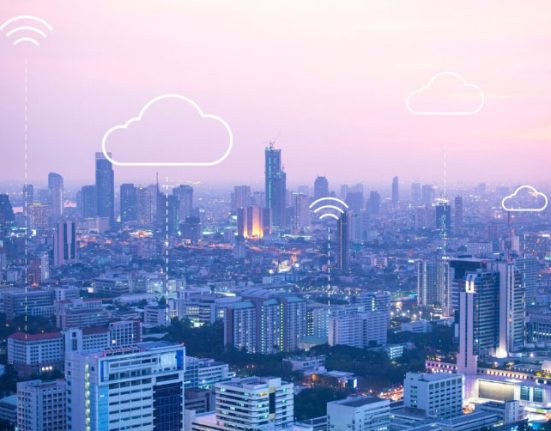How to Support Post-Launch Maintenance for Applications Developed for Startups like Garage2Global?
When startups like Garage2Global develop applications, one of the crucial elements often overlooked is post-launch maintenance. It’s easy to get caught up in the excitement of the launch, but maintaining the application post-launch is key to ensuring that it continues to function smoothly, improves over time, and meets the evolving needs of the business and its users. Without proper maintenance strategies in place, even the most well-developed applications can fail to meet user expectations or become obsolete. This article explores the importance of post-launch support for startups, the challenges they might face, and how developers can ensure long-term success.
Why Post-Launch Maintenance Matters
Post-launch maintenance isn’t just about fixing bugs or making quick tweaks. It encompasses a broader spectrum of activities that ensure the application remains relevant, user-friendly, and in line with business goals. For startups like Garage2Global, it’s vital to provide a robust maintenance plan, as applications often undergo significant changes in response to user feedback, market conditions, and evolving technologies.
1. Bug Fixes and Performance Optimization
Even after thorough testing, bugs and issues might arise once the app is in use by a broader audience. The post-launch phase allows developers to fix these bugs promptly, enhancing the user experience and preventing potential security risks.
2. User Feedback Integration
Startups need to remain agile. Once the application is live, user feedback becomes essential for refining features, improving functionality, and prioritizing necessary updates. A structured approach to collecting, analyzing, and integrating feedback will ensure that the app evolves in line with user expectations.
3. Security Patches and Updates
Security is a constant concern, especially as new vulnerabilities are discovered over time. Regular security patches and updates are necessary to safeguard the application from cyber threats. Startups must ensure their development team is prepared to address any potential risks swiftly and effectively.
Challenges Startups Face in Post-Launch Maintenance
While post-launch maintenance is crucial, it is not without its challenges. Startups, in particular, may face a number of obstacles as they strive to provide continuous support for their applications.
1. Limited Resources
Many startups operate on tight budgets and limited personnel, which can make it difficult to allocate enough time and resources for ongoing maintenance. The challenge is to prioritize maintenance activities that deliver the highest return on investment.
2. Evolving Technology
The tech landscape is constantly changing, and what worked at launch may quickly become outdated. Adapting to new technologies, platforms, or frameworks while maintaining the integrity of the original application can be both challenging and costly.
3. User Expectations
As startups grow, so do user expectations. Users expect fast, reliable, and feature-rich applications. This means that the development team must continually innovate and upgrade the app to meet these demands, ensuring the app doesn’t fall behind competitors.
Best Practices for Effective Post-Launch Maintenance
Startups can overcome the challenges of post-launch maintenance by adopting best practices that will not only ensure a smooth operation but also drive long-term success.
1. Create a Maintenance Roadmap
Before launching the application, it’s important to set a clear roadmap for its post-launch phase. This includes defining objectives, establishing maintenance schedules, and anticipating necessary updates. This roadmap should outline key performance indicators (KPIs) and timelines to ensure that progress is measurable.
2. Monitor Performance Continuously
Continuous monitoring of the application’s performance is crucial. By using analytics and performance monitoring tools, developers can quickly identify areas that need improvement. Startups should prioritize app stability, load speed, and user experience in their monitoring strategy.
3. Invest in a Strong Support Team
A skilled support team is essential for the success of post-launch maintenance. Whether it’s an in-house team or a third-party service, startups need to invest in professionals who are capable of identifying and resolving issues quickly. Having a reliable support team will help avoid downtime and ensure users have a positive experience.
4. Establish Regular Updates
Rather than waiting for major problems to arise, startups should establish a regular cadence for updates. This includes bug fixes, performance enhancements, and the release of new features. A proactive approach to updates will improve user satisfaction and show that the company is dedicated to improving the application.
5. Leverage User Feedback
Users are the best source of information for improving an application. Startups should actively solicit feedback through surveys, reviews, or direct interactions. By incorporating user suggestions into future updates, startups can build stronger relationships with their user base and create an application that is truly valuable to them.
How Post-Launch Maintenance Supports Business Growth
For startups like Garage2Global, the application is often a cornerstone of the business model. Ensuring its continued success is critical for growth. Here’s how post-launch maintenance can contribute to business development:
1. Enhances Customer Retention
By ensuring the app remains functional, secure, and user-friendly, startups can keep their existing customers happy. Satisfied users are more likely to recommend the application to others, leading to organic growth.
2. Improves Brand Reputation
A well-maintained application reflects positively on the brand. Users are more likely to trust a company that is committed to offering quality service, and post-launch maintenance plays a big role in building that trust.
3. Adapts to Market Trends
The business environment is ever-changing, and startups must remain adaptable. Post-launch maintenance allows companies to respond to shifts in user behavior, industry trends, and emerging technologies, ensuring that the application stays competitive in the marketplace.
4. Supports Long-Term ROI
Regular maintenance can extend the life of an application, reduce the likelihood of costly repairs, and help companies avoid the need for a full redevelopment. This translates to a higher return on investment, which is crucial for startups operating with limited capital.
Conclusion: Ensuring the Longevity of Your Application
For startups like Garage2Global, post-launch maintenance is an ongoing process that requires attention, resources, and a strategic approach. By proactively addressing potential issues, listening to user feedback, and keeping up with evolving technologies, startups can ensure the longevity and success of their application. Post-launch maintenance is not merely a reactive step but an essential part of the development lifecycle that directly impacts user satisfaction, business growth, and long-term sustainability. For any startup, investing in robust post-launch strategies is the key to making the application a long-term success story.














